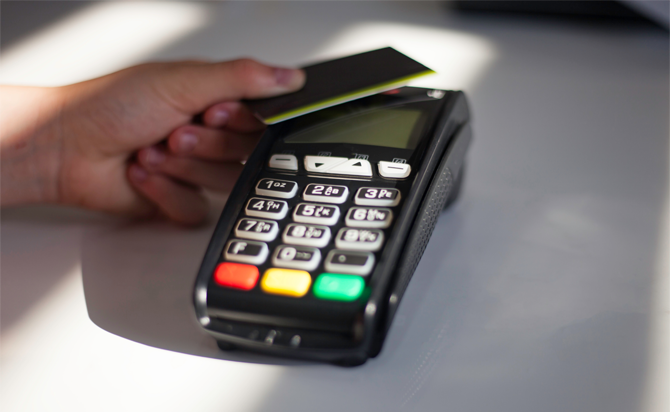
As data theft remains a significant danger to consumers and merchants, EMV cards play an integral role in the global effort to improve payment security by using a technology that helps to protect credit card information.
According to the latest report by the Federal Trade Commission, there were over 2.2 million reports of fraud last year in the United States. “Bank transfers and payments accounted for the highest aggregate losses reported in 2020 ($314 million), while credit cards most frequently identified as the payment method in fraud reports”, states the paper.
In this article, we’ll look at common questions surrounding EMV and how it helps to fight credit card fraud and thus increase payment security:
- What does EMV stand for?
- What is an EMV card?
- How do EMV cards work?
- Why is EMV technology more secure?
- How effective is EMV technology in preventing fraud?
- What is EMV compliance?
What does EMV stand for?
EMV stands for Europay, Mastercard and Visa and refers to a payment method based upon a technical standard pioneered by these three organizations. By adhering to the EMV standard, payment security is improved and the potential for fraud is reduced.
Introduced to the United States in 2015, EMV is now the global security standard for chip-based debit and credit card transactions.
What is an EMV card?
An EMV card is a credit or debit card containing an embedded microchip. This differs from the traditional credit card which featured a magnetic stripe - a security loophole which could be easily exploited by criminals. EMV cards are far more secure, and can be used in dipping, swiping or contactless payment situations.
An EMV card is also referred to as the following terms:
- Chip and PIN card
- Chip-enabled smart card
- Smart-chip card
- EMV smart card
How do EMV cards work?
For consumers using an EMV card, the process is straightforward - when making a purchase, they simply dip or insert their card into a chip-enabled terminal or EMV card reader and wait for the transaction to be authenticated. For business owners, it’s important to have a point-of-sale (POS) system that is compatible with EMV technology, one that can read the card’s microchip.
EMV credit cards can now also support near field communication (NFC) or contactless card-reading technology — in this case, customers hover their credit card over or near the terminal, instead of dipping or inserting it.
All current options contrast with the older method of swiping a magnetic stripe through a payment terminal, which opened the card user to potential security risks.
Why is EMV technology more secure?
When a transaction takes place using an EMV card, a transaction number is generated which is unique and cannot be replicated. Even if a hacker tried to steal information from a payment system, duplicating the information from an EMV card would be of no benefit - because customer data is encrypted and the transaction number isn’t reusable.
The microchip is therefore the key element in reducing counterfeit fraud, as the card information is unable to be used for copies.
The magnetic stripe on older credit cards was a huge security vulnerability. Sensitive information is at an ever-increasing risk from data breaches, and EMV technology significantly lessens the opportunities for hackers to obtain credit card information. This reduces the risk to consumers and the reputational and financial cost to organizations.
How effective is EMV technology in preventing fraud?
According to Visa, the shift to EMV has been extremely effective in reducing credit card fraud in the United States. The statistics show:
- For merchants who have completed the EMV upgrade, counterfeit fraud dollars dropped by 80% between September 2015 and September 2018.
- Chip cards are now accepted in over 3.5 million merchant locations.
- 68% of U.S. storefronts now accept EMV cards.
- In December 2018, 98% of overall payment volume was on EMV cards.
What is EMV compliance?
In order to get U.S. businesses on board with using EMV technology to protect customer data, the Payment Card Industry Security Standards Council (PCI SSC) declared that merchants who did not adopt the secure payment acceptance method if accepting card-present transactions by October 1, 2015, would face increased potential liabilities. This was known as the liability shift.
Under this EMV compliance regulation, any merchant who had not adopted EMV acceptance assumed the liability of fraudulent activity and the associated costs. Before this shift, it was the banks that would previously assume the liability. This has encouraged merchants to adopt terminals that have secure EMV chip-reading capabilities.
Beyond EMV: Encryption and tokenization
EMV is one of the most recent global initiatives to fight fraud and protect sensitive data processed during card-present transactions. The advancement in technology not only protects the merchant, but also issuers and customers - so all parties involved benefit.
The technology of EMV, combined with other security solutions like point-to-point encryption (P2PE) and tokenization (replacing sensitive customer data with an untraceable, algorithmic number) provides for a powerful combination of protection.
As a merchant, if you’re looking for an EMV-ready credit card terminal that’s simple to use and is protected by P2PE, CardPointe or Bolt might be the EMV payment system for you. Both benefit from the powerful layer of defense provided by CardSecure that protects every credit card transaction and prevents harmful data breaches.
